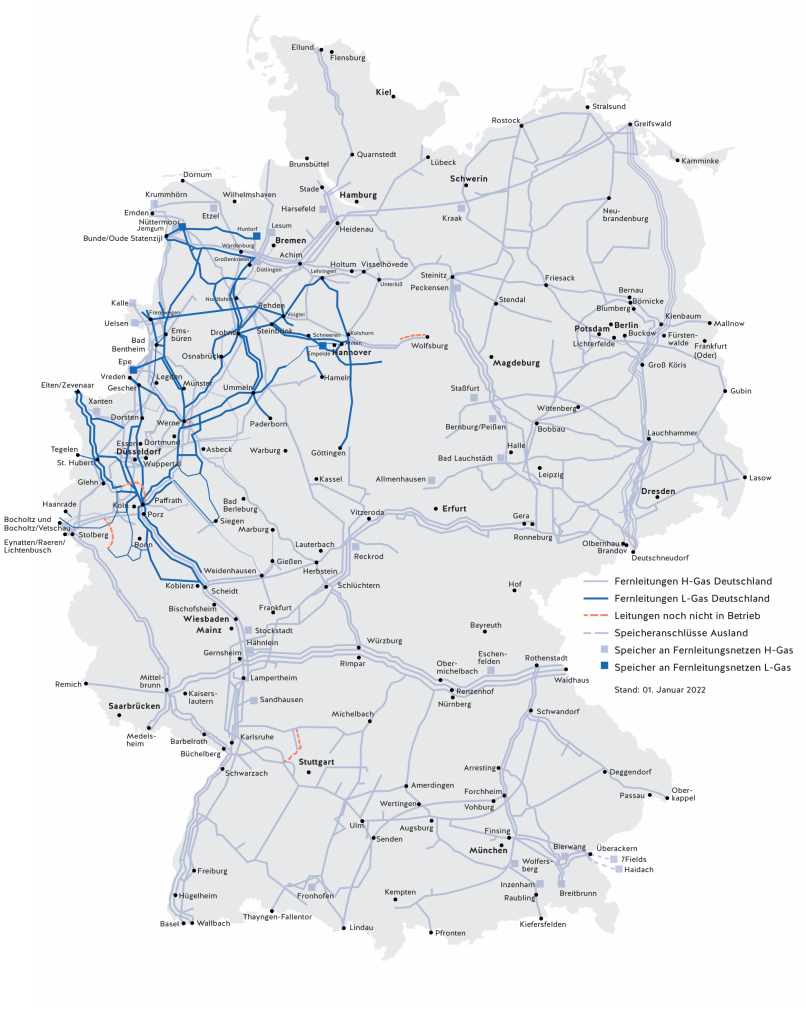We organize the gas transport. With a length of approx. 40,000 km, the German transmission networks form the backbone of the gas transport system in Germany.
Large quantities of gas are transported at high pressures of up to 100 bar through the pipes of the transmission system operators, which have diameters of up to 140 centimetres. Added to this is the transit of natural gas through Germany to neighbouring EU states. Compressor stations at intervals of between 100 and 200 kilometres ensure that the pressure remains stable over these long distances. Transmission system operators receive the gas at an entry point at the German border. This could be, for example, a border crossing point (BCP) on the border between Germany and Poland or the Netherlands. From there, the gas is fed into the German transport network and transported through underground pipelines to the respective region where it is needed.
For historical reasons, the structure of the German gas transport network differs from other European transport networks. The networks were not primarily organised by the state, but have grown together over many decades on a regional private-sector basis. While 16 transmission system operators currently organise gas transport in Germany, there are seven in Austria, two in France, and only one each in the Netherlands and the UK.

